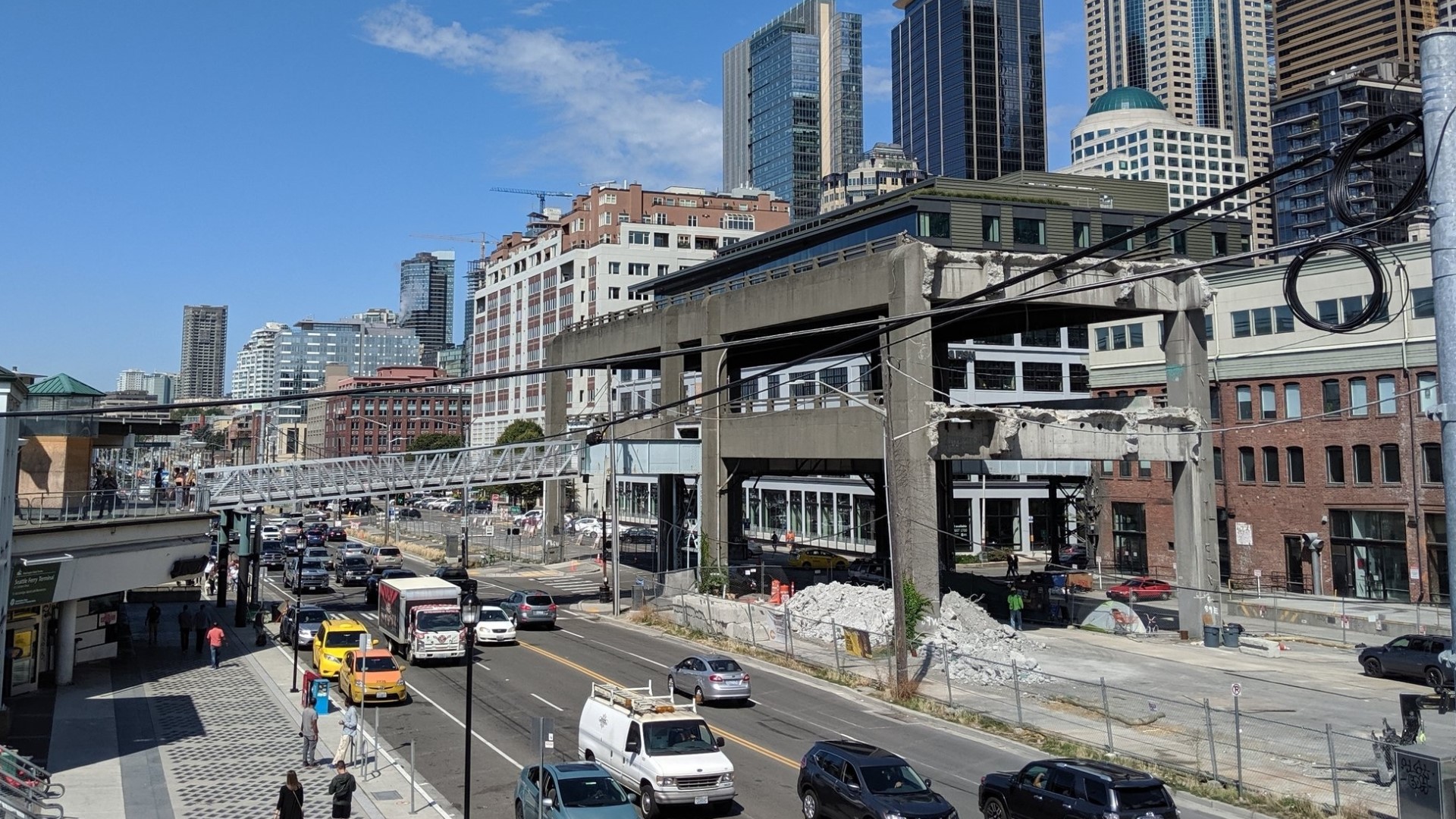It takes one bad crash on the roadways through Seattle to create a traffic nightmare. It's just one reason why the city and agencies are urging people to plan ahead for the viaduct closure next year.
Dr. Phil Swartzendruber, air quality scientist for the Puget Sound Clean Air Agency, says aside from increased commute times, traffic gridlock increases pollution. If there's stop-and-go traffic, emissions go up.
"We care a lot about how people commute, even without the viaduct closing or any of those issues. And it really comes down to the emissions we're getting from transportation vehicle" he said. "Transportation is really the largest source kind of category for our pollution here in the Puget Sound region. Anything we can do to improve and reduce those emissions and make things better, we really want to support those as much as we can."
Dr. Swartzendruber says at least 5 percent of all climate emissions are due to the congestion of traffic. So not only is there an economic impact to the area - congestion cost Seattle an estimated $5 billion in 2017 - there's also a health impact. That's certainly true for people in the nearby vicinity of where the congestion is, he said.
"We have lots of reasons to be interested in [the viaduct closure]," Dr. Swartzendruber said.
>>RELATED | Geofencing blocks rideshares from Third Avenue
A three-week closure of the viaduct is scheduled to begin Jan. 11. It will precede the opening of the tunnel. The tunnel is expected to open the week after the grand opening celebration on Feb. 2-3, as long as there are no extreme weather events that delay construction.
According to the Washington State Department of Transportation, about 5,200 vehicles travel on the northern section of the viaduct per hour at peak times (6-9 a.m. and 3-6 p.m.) on the weekdays.
A study by KING 5 found there are approximately 18,700 vehicles traveling northbound between 6-10 a.m. About 10,500 drivers use the Seneca Street and Western Avenue exits.
When State Route 99 shuts down through Seattle for three weeks, thousands of drivers will divert onto I-5 or the city's surface streets.
>>RELATED | Complete coverage: Tunnel Effect
The City of Seattle has warned people the traffic congestion they're seeing now is only expected to get worse, thanks to this and several other large projects.
"The impending demolition of WSDOT's 1950s vintage Alaskan Way Viaduct and the opening of the new SR 99 Tunnel will forever change the Seattle transportation landscape," a message from the city reads.
The city says it is working with transit agencies to reduce traffic and help people get around.
Commute Seattle, a city-funded nonprofit with the mission to create a transit-supportive business culture, says it doesn't have enough data from businesses to predict how many people will change their commute when the viaduct shuts down. Jonathan Hopkins, executive director of Commute Seattle, said there are many companies making accommodations to increase telecommuting.
"We've worked with dozens of them" he told KING 5.
There are also nearly 100 small businesses that are lined up to purchase or subsidize transit passes for their employees, according to Hopkins.
Some companies are also making investments into public transportation. Amazon, for example, announced earlier this year that it is investing about $1.5 million in King County Metro to increase bus service.
The number of people commuting into downtown is already declining. A survey done by Commute Seattle estimates that nearly half of Seattle's downtown workforce of more than 260,000 use transit for their daily commute and 75 percent commute without driving alone.
Still, there are thousands of single-occupancy trips being made, and that is what local leaders hope to change.
Dr. Swartzendruber says maybe people will use the viaduct closure as an excuse to reconsider their commuting habits and try something new, such as telecommuting or adjusting the time they drive to work.
"We recognize the headache that will happen," he said.
Join KING 5's Seattle Tunnel Traffic Facebook group to stay up-to-date on the latest Seattle tunnel and Viaduct news and get tips to battle traffic during the three-week Viaduct closure in January.



